No turning prosthetics

Prosthetics without turning of adjacent teeth - restoration of lost teeth, in which the supporting teeth are not depulped and are not grinded.
Science does not stand still, and modern prosthetics methods can fully restore the functionality of the jaw, without injuring the adjacent teeth.
Types of prosthetics without turning
To restore missing teeth without turning, various prosthetics are used.
Dental implantation
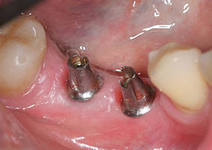
Implantation is one of the most gentle ways to restore lost teeth.
The essence of implantation is that in place of the missing tooth, an artificial root (implant) is implanted in the jawbone. Then a crown is mounted on it.
This option is considered ideal, since prosthetics of one tooth without turning of adjacent teeth allows not injuring neighboring teeth. This is one of the most physiological and reliable methods of prosthetics.
This method is ideal for restoring any teeth, for example front teeth, when it is necessary not only to restore their function, but also to solve the aesthetic problem.
Adhesive Bridges
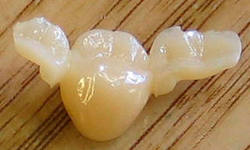
The adhesive prosthesis is two tabs that help the structure rest on adjacent teeth.
The prosthesis structure includes a fiberglass beam that connects the tabs. An artificial tooth is attached to the beam.
This type of dental prosthetics is a technique in which the fixation of the structure is carried out using elastic and durable materials, such as fiberglass and plastic.
Depending on the method of attachment, adhesive bridges can be of three types.
The most gentle way is to attach the prosthesis using special glue. A significant advantage of this technique is reversibility, the possibility of patient refusal to install the structure.
Two other ways of attaching adhesive bridges, involve a small treatment of the abutment teeth, on which small incisions are made on the back surface or on top. It is important to know that adhesive prostheses are more often used as temporary ones due to their unreliability.
Micro-lock prosthetics
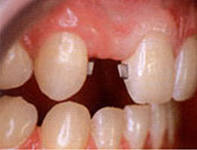
This method allows prosthetics without turning.
For this, microchannels are created in the walls of the teeth, which will perform the function of supporting ones. The locks are fixed in them, with the help of which the body of the bridge is held.
The structures are able to withstand heavy loads, and the locks evenly distribute the load between the supports, thereby eliminating the pressure of the prosthesis on the gum.
Lock prosthetics are not recommended by dentists for permanent use due to unreliable construction.
Removable Nylon Dentures
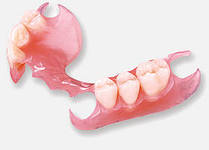
Prosthetics with nylon structures is the latest method of prosthetics without turning them. A nylon prosthesis is a structure that consists of a frame and artificial teeth.
Due to the flexibility and softness of nylon, the structure fits snugly to the sky, grasps gums and abutment teeth quite well.
The prosthesis is attached using clasps (hooks), or using a suction effect.
With the help of such designs, you can restore from one or more teeth.
Removable dentures with hooks
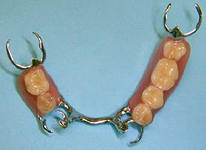
The denture without grinding the teeth can be equipped with hooks that encircle the supporting teeth.
These designs can rub gums.
Such prostheses are unreliable and look unaesthetic.
Cable-stayed prosthetics
A high-strength thread is tensioned between two abutments, on which an artificial crown is attached. The thread passes inside the crown, clasping two supporting teeth.
Using tabs
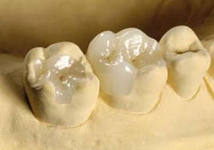
The method of prosthetics using tooth tabs allows you to replenish lost tooth fragments and cement them reliably without prior grinding.
Prosthetics using the CBW method
The system allows prosthetics of the front teeth without turning.
Dante's Method
This is the author's method of denture without turning the supporting teeth.
Composite dentures
The structure is fixed using a fiberglass beam and a translucent tape attached to the abutment teeth. The service life of such a prosthesis is quite short due to insufficient structural strength.
Non-turning prosthetics with CBW
The Crownless Bridge Work (CBW) system is a bridge without traditional tooth preparation. This technique of dental prosthetics appeared recently: at the end of the twentieth century.
This technology eliminates the depulpation and turning of the teeth under the crown. It is used when defects of one or two teeth are included in the frontal and chewing areas.
The essence of the CBW method is as follows:
- A microchannel is created in the wall of the abutment tooth, the diameter of which is 1-1.2 mm and the length is 1.6-1.8 mm. Micro locks are fixed in the channel, to which the body of the bridge is attached with cement.
- The design features of the CBW bridge allow it to withstand a load that greatly exceeds the masticatory pressure. The main load is taken by micro-locks, evenly distributing it between the supporting teeth.
The advantages of CBW bridges over other bridges:
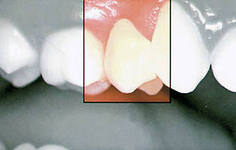
- When using this design, there is no pressure on the periodontium, which is a hallmark of the CBW system.
- The use of this method of prosthetics costs the patient much cheaper than traditional.
- Preservation of supporting teeth.
- The prosthetics process is reversible. There is the possibility of restoration work.
- The installation of the prosthesis takes less time than when installing conventional bridge structures.
- The installation procedure is quite simple, which eliminates medical errors.
- The absence of a surgical stage and a long healing period for the prosthesis.
- The ability to install the system in the teeth with composite restoration.
- Good aesthetic result.
Prosthetics CBW has contraindications:
- Strong destruction of the abutment.
- Offset tooth in the direction of the missing tooth.
- Thinning of dentin and tooth enamel.
- Lack of two or more teeth in a row.
Materials used for CBW prosthetics:
- Metals and their alloys.
- Different types of ceramics.
- Acrylic plastics.
On the front abutments, zirconium locks are combined with an all-ceramic bridge.
Video: CBW Prosthetics
Dante's Method
Dentures without turning can be installed using the author's technique of Alexander Dante.For prosthetics without turning, at one time they used nylon, fiberglass, nylon. But he achieved the best results when using carbon fiber.
The procedure procedure is as follows:
- First, a tooth is cleaned using a laser. The result is the restoration of dentin and tooth enamel, worn when chewing.
- Perforation of the tooth with aluminum oxide. In the absence of a tooth, carbon fiber systems appear that are attached to the abutment teeth using microscopic holes. The load with this method of tooth restoration is distributed evenly over the entire gingival surface.
- Facing the structure with heliopolymers, due to which, the teeth become like real ones.
Prices for prosthetics without turning
| Type of prosthetics | Cost (in rubles) |
| Dental implantation | 20000 — 50000 |
| Adhesive bridge | 6000 |
| One-jaw removable nylon prosthesis | 32000 |
| Removable acrylic denture | 7000 — 20000 |
| Tabbed bridge | 10000 |
| Bridge prosthesis CBW | 40000 |
| Microblock CBW | 10000 |
Patient Reviews
- Olga Nikolaevna, 42 g.
I have had an implant for 2 years. He took root in two and a half months. I am very pleased with my new teeth.
- Petr Ivanovich, 61 years old.
I have been using a removable nylon prosthesis for five years. The good news is that for others it is not noticeable. I look after him as if I were in my own teeth.
- Elena Viktorovna, 38 years old.
Three years ago I got a bridge. Had to injure healthy teeth. It was nevertheless necessary to choose a prosthesis, the installation of which does not need the turning of adjacent teeth.
- Irina Sergeevna, 68 years old.
I quickly got used to the clasp prosthesis. Pleased with the design.
- Lyubov Dmitrievna, 54 years old.
They made an acrylic prosthesis. I just can't get used to it. When talking, a gag reflex is triggered.
Photo: before and after
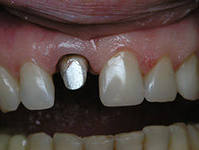 |
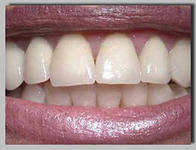 |
 |
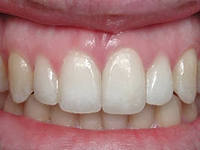 |
 |
 |
